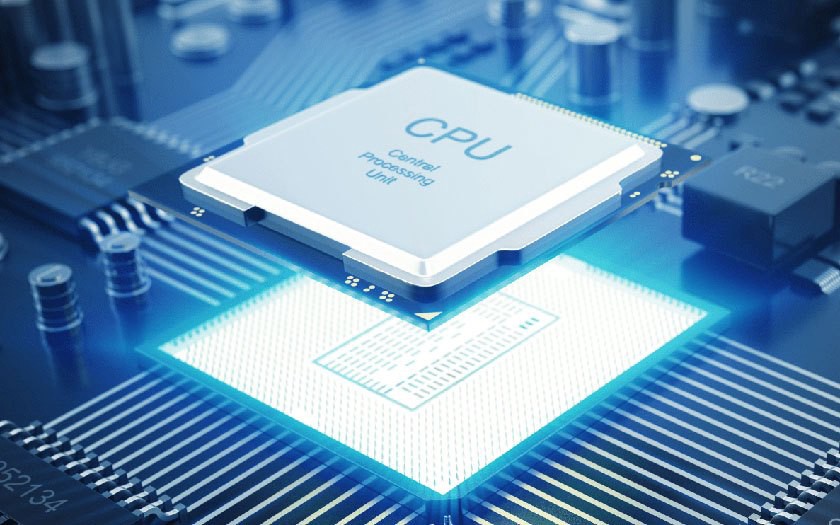What is Overclocking?

Table of Contents
Overlocking Definition :
One has overlooked to speed up the computer even more than the manufacturer’s specifications so that it runs at a faster speed than before. It is a very common practice in the gaming world, The process of overclocking the CPU is accomplished by alternating the clock ratio of the (FSB) in the BIOS setup.
Is it beneficial for the system to overclock your CPU?
Overclocking your CPU is one of the great procedures to make your PC run at a faster speed — without spending even little money on it or an expensive upgrade. It can be done by running your CPU at a higher than built-in frequency. Read below to learn how to allow the processor to its limit, check the device temperature, and achieve a stable or effective overclock.
How to overclock your CPU?
Overclocking your CPU can make your processor run altogether quicker by applying the correct settings and having sufficient cooling. It’s not even as complicated as it once seemed to be, with numerous fantastic devices that will assist you with carrying out the job efficiently and successfully.
Would it be advisable for you to overclock your CPU? That is totally up to you. It has its dangers, however, you won’t void your guarantee if you don’t go too insane — and, in limits, it’s an effortless and nearly hazards free task.
An expression of caution
At the point when you overclock a CPU, two or three things occur. The chip produces more smoke and is hotter and uses more force. Both factors can prompt issues in case you’re utilizing the stock cooler provided with the CPU. That doesn’t really mean you can’t overclock, yet your potential overclocking headroom is much lower than if utilizing a further advanced air or fluid cooling system in your PC.
Overclocking does typically bring down the life expectancy of a CPU, however not generally and not even necessarily for a measurable period. However, forcing it to run quicker and utilize more force can prompt some measures of speedier degradation. However As long as you don’t get extraordinary with overclocking, you’ll probably upgrade your system before this turns into an issue. Simply remember the signs.
If you need to overclock a laptop CPU, you’re most likely out of luck. Few permit it, and only fewer still run a thermal headroom to make it practical. Yet, regardless of whether you can, we alert against it for your first overclocking adventure.
But overclocking your CPU can void its guarantee. AMD and Intel normally don’t cover overclocking, however, they would be unable to demonstrate overclocking executed your CPU — except if you pushed an abundant voltage through the chip.
Motherboard makers could conceivably cover overclocking. In case you’re concerned, check the warranty before attempting.
Get research and Recognize your CPU :
Before you begin overclocking the CPU, make sense of what you have — the chip may not support overclocking first. if it does, decide its theoretical maximums with a little or no examination.
Which processors you can overclock is a region where AMD and Intel very essentially. You can overclock the latest CPUs from AMD, particularly Ryzen. Normally, you can just overclock the Intel K and X arrangement CPUs.
The following are a few recent opened Intel processors prepared for overclocking. In the event that your CPU isn’t on the rundown and doesn’t have a K or X addition in its name, overclocking may not be possible. Twofold check in case you’re uncertain.
SKU Base clock Turbo clock
Center i9-9900K 3.6GHz 5.0GHz
Center i7-9700K 3.6GHz 4.9GHz
Center i5-9600K 3.7GHz 4.6GHz
Center i7-8086K 4.0GHz 5.0GHz
Center i7-8700K 3.7GHz 4.7GHz
Center i5-8600K 3.6GHz 4.3GHz
Center i3-8350K 4.0GHz N/A
AMD processors :
AMD processors have remained totally opened and overclockable for ages. Regardless of whether you have an AMD FX-arrangement CPU or one of the more up to date Ryzen chips, they would all be able to be changed. We could show them all here, however that would be broad. Odds are on the off chance that you have an AMD CPU, overclocking is on the table. In case you don’t know, don’t worry. The terrible thing that can occur if you can’t overclock your CPU is that you attempt, and it doesn’t work. The software we suggest will let you know in that capacity, so there are very fewer chances that you’ll face some failure.
What is Housekeeping?
Since overclocking expands the working temperature of your system, it powers both your CPU and device cooling to work harder than expected. If this is your first overclocking experience, give your PC a spring cleaning. You can basically clean the dust filters on your front admission fans, or eliminate all equipment and wipe down each surface inside.
Eventually, you need to ensure clumps of residue aren’t hindering air streaming in and out of your computer. As well as, ensure dust doesn’t accumulate on your CPU cooler. That is the place most of the extra heat resides.
Before cleaning, turn off the PC and wear an enemy of the static wristband. We also don’t prescribe utilizing a vacuum cleaner to eliminate dust because of the potential for static development. If the residue is difficult to reach, utilize a container of compressed air sold by a store like Walmart or Best Buy.
When at last you’re prepared, skirt ahead to the area for the brand of CPU you have, and stick to the guidelines there.
Intel CPU: Extreme Tuning Utility
You can overclock Intel CPUs utilizing the BIOS. Since this is a beginner’s manual and guide for overclocking, notwithstanding, we suggest Intel’s Windows-based Extreme Tuning Utility (XTU), which you can download here. It’s a free programming suite expressly made to overclock your Intel CPU.
In contrast to some third-party programming, the Intel XTU is steady, solid, and much reliable to cause any issues all alone. It gives you a detailed look at your CPU’s present state. Regardless of whether you’re not overclocking, it’s an extraordinary minimal utility giving loads of data and information about your system. You can screen the CPU load, the temperature, and run benchmarks.
What is Intel XTU Main?
Intel XTU may look a bit scary at first, given its some highly granular choices. But once, when you develop knowledge and become familiar with the instrument, all that makes sense. The reams of data become profoundly helpful.
It has a few stages
Stage 1: Baseline temperatures and it’s functioning
The 1st time when you start XTU, take a couple of gauge readings to ensure your CPU is prepared to overclock. Start by running the Stress Test at the left-hand menu. Run this test for at any rate 60 minutes.
Intel XTU Stress Test :
You can sit and watch the test, or accomplish something different. If you leave, return around the hour’s end and have a look at the system data in the base of the window.
You have to observe Package Temperature. If your CPU is more sweltering than 80 degrees, you don’t have the thermal headroom to overclock. We suggest improving your cooling before proceeding with any further.
Intel XTU Package Temp
If your temperature is well beneath that — ideally well under it — you have some thermal wiggle space to push your chip at a high frequency (with relative security).
Stage 2: Multipliers
Even though you can overclock your CPU utilizing the Basic tab, finding out about the various parts of an overclock will assist you with understanding what’s going on with the chip. It likewise makes it simpler to accomplish a stable overclock. Select the Advanced Tuning tab from the left-hand menu and afterward look to the headed Multipliers.
Multipliers (or CPU proportions) relate to the speed you’re escaping out of the CPU. It’s a duplication of the BCLK frequency or reference clock. An x32 multiplier would ordinarily mean 3.2GHz of turbo frequency.
Raise your multiplier all cores by one number (x33 in our model). Even though you can alter frequencies exclusively on various cores, we’ll push for an all-core overclock to keep things basic.
Intel XTU Overclock
Presently test the overclock’s strength. Select the Stress Test from the left-hand menu and rerun the test. For this situation, you just need to run the test for 10 minutes. If it finishes without an issue, increase the multiplier by another step progression. Do this process again. In the long run, the test will report failure or it will make your PC crash. At the point when that occurs, step back to the past multiplier setting.
In case you’re happy with the last and final overclock, run more broadened stress tests and play a couple of games for a few hours to ensure the overclock stays stable. If not, diminish the multiplier another step and start the stress testing measure once more. When you arrive at a point where you can joyfully utilize your PC as normal at a higher frequency, praise yourself for a fruitful overclock!
If you run into trouble attempting to balance out your overclock or need to check whether you can drive the system further, try altering its voltage.
Stage 3: Core voltage
Numerous voltage parameters can influence a CPU’s activity, yet the most significant and effective is center voltage (VCore). You can modify the voltage utilizing Intel’s XTU, like how you changed the multipliers. This cycle can differentiate among unstable and stable overclocks, or even the contrast among humble and a lot higher overclocks.
Yet, be cautioned: You have to take more care while altering the CPU voltage than you do with multipliers. If you push the CPU to run at an absurdly high multiplier, it will simply crash and restart your computer. If you attempt and power an excessive amount of voltage through your CPU, it can kill it, so continue with care.
Use Google to perceive what settings others use for your particular CPU, particularly for VCore settings, given its capability to harm the chip. Reddit’s r/Overclocking is an extraordinary asset to perceive what others produced from similar CPU arrangements.
An overall dependable guideline is that anything over 1.4 volts is very dangerous. Notwithstanding, it is totally dependent on the specific chip in your PC, so extra examination is worth considering.
At the point when prepared, select the Advanced Tuning tab in the left-hand menu of the XTU and increment your center voltage by around .025. For instance, If you’re beginning at 1.250, move to 1.275. Select Apply. If the system doesn’t crash, you can rerun the pressure test to ensure you’re still inside a limited temperature range.
You can also try expanding the multiplier to check whether the extra voltage improves your CPU’s overclocking capacity.
Stage 4: Tweak, test, rehash, and repeat
Now, you have all the apparatuses for finding your CPU’s steady overclock. Take it stable. Change settings just in little additions. Run at any rate one short pressure test after each change. Ensure your CPU temperatures don’t pass 80 degrees after a protracted pressure test. As well as, don’t set your voltages excessively high.
If your device crashes or restarts, that is an indication you’ve driven something excessively far. Return and make a few changes. The most significant result is that you locate a protected and stable amount of frequency for your CPU. It’s really funny to push it to run at a much higher frequency, however, it’s not durable enough to run applications or mess around without slamming, it’s very little use outside of boasting rights.
When you’re content with a steady frequency, observe your settings so you can reapply them later on if necessary.
What is AMD: Ryzen Master?
The steps for AMD CPUs are a lot equivalent to Intel chips, however, the product is unique. If you have an AMD Ryzen processor onwards 2017, the product we suggest for novices is AMD’s, Ryzen Master. You can download the utility from AMD’s site here.
For more established AMD processors, we suggest AMD Overdrive. The accompanying directions despite everything apply, except the product design slightly different. Try to double-check what you’re doing before doing any changes to the device.
Note: You can overclock an AMD CPU utilizing the BIOS, however, we suggest utilizing Windows-based programming for your first attempt. It’s simpler and faster.
It has four stages
Stage 1: Stress test
Before you start overclocking the CPU, ensure that it won’t cross safe temperatures. Even though Ryzen Master has its underlying pressure test, it doesn’t keep going long. Rather, we suggest the AIDA64 Extreme device and its soundness test (free preliminary). If you like this apparatus, a full permit costs $40, which covers up to three PCs.
Open it and select Tools from the top menu, after the Stability Test. Press Start when prepared and leave your PC for around 60 minutes. Ensure that at no time during testing do the temperatures limited to 80 degrees. If they do, improve your CPU cooling before attempting to overclock. On the off chance that you have some temperature headroom, proceed onward to overclocking your system.
Stage 2: Frequencies
Ryzen Master doesn’t give you manual power over CPU multipliers. Rather, it has clock speeds for each physical center that you can change exclusively or in all cases. To do as such, select Profile 1 or 2 from the base menu and afterward set Control Mode to manual. Ensure that the All Cores setting is chosen and green in the left-hand menu. If not, click it to change its status. You would now be able to alter the frequencies of all centers simultaneously.
Push the Plus image on any center to raise the frequency by 25MHz. When finished, press Apply and Test from the top menu to apply the frequency change you simply made. Next, run Ryzen Master’s inherent steadiness test instrument to ensure you have a stable overclock. Watch out for the temperature perusing in the upper left of the window.
If the test passes effectively and temperatures stay sufficiently low, raise it by another 25MHz, and rehash the security test. If the test faces failure or your temperature exceeds 80 degrees, decrease the frequency. If your device crashes or secures after a restart, try not to pass protected and stable frequencies. Note: You can bring the bigger augmentations in the frequency if you like, however you stand a more danger of your system. There are chances of locking or crashing the whole system.
When you’ve discovered the most elevated frequency you can get without facing the failure in a test or smashing the system, open AIDA64 once more, and run a more broadened soundness test. If your CPU passes through this test, you have effectively overclocked your device. If it doesn’t, bring down one stage more frequently. Rehash the cycle until you discover a frequency that securely finishes the test.
If you need to overclock further or make an overclock stable, you should try modifying voltages, as well.
Stage 3: Voltage control
Expanding the CPU’s voltage can improve the strength of an overclock. It additionally permits you to overclock further. The disadvantage is that it can significantly expand temperatures. Pushing the voltage too high can harm your processor too, so continue with caution. Just make little changes one after another.
A sheltered voltage for most AMD CPUs ought to exceed 1.4, however, we prescribe investigating your particular CPU to ensure you don’t set the voltage excessively high.
If you are glad to continue, select your picked profile and watch that a green hover lives close to Voltage Control. Physically select this choice if you don’t see the green circle. Next, increment the voltage by one utilizing the bolts to one side of the setting. Press Apply and Test to check whether the overclock stays stable.
If you have a stable overclock, run the AIDA64 test for an hour to check whether it stays stable over more periods. If it crashes or freezes, have a go at expanding the voltage further. If your device or CPU gets excessively hot, you should bring down the voltage and improve your cooling before going any further.
Stage 4: Rinse and repetition
When you’ve discovered a steady frequency and voltage, congrats are all together! You would now be able to expand frequencies further. If you have extra voltage and temperature headroom. Spare your profile to secure every one of these settings and use them again later on.
Ryzen Master should stack with Windows. To apply the overclock, give your admin approval when provoked. If it doesn’t request your permission, start the application and physically apply the overclock.
Computerized Trends assists peruse with monitoring the relentless universe of tech with all the most recent news, fun item surveys, astute articles, and exceptional sneak looks.
The Benefits of Overclocking
Overclocking is, basically, utilizing the settings present on the motherboard so as to have the CPU run at a higher speed than what it’s set to run by the maker. This comes at the expense of expanded heat production, just as expected decrease of life expectancy, however for some individuals the advantages far more than the dangers.
Overclocking permits you to fundamentally get ‘free’ esteem from your equipment, conceivably letting the CPU last longer before it needs an upgrade, also generally increasing performance in high demand applications like gaming and video altering. A decent, fruitful overclock can give as much as a 20% performance increase or more, as long as you’re willing to put in the effort.
Risks of overclocking
Overclocking is incredible; however, it accompanies a couple of dangers. They aren’t nearly as high as before, however, they’re dangers to be viewed as in any case.
While overclocking, what we’re doing is expanding the multiplier on the CPU, permitting it to run quicker. The higher we clock the CPU, the higher voltage the CPU will require, which will in this manner produce more heat. Heat is the primary problem of CPUs, and a lot of heat can prompt a shorter life expectancy for the chip.
For the vast majority, this won’t generally be an issue. Very few individuals these days plan on having their PC keep going for a long time.
The other fundamental danger is voltage. As recently referenced, to accomplish higher overclocks you likewise need to build the voltage given to the CPU. Heat is one side-effect of this which is an issue, however, the voltage itself could likewise be an issue. Too high voltage on your CPU can sear the chip, slaughtering it.
As long as you keep the CPU cool, and protect the voltages inside levels (I’d state 1.4v is the supreme max, however, I don’t prescribe in any event, drawing near to it), you ought to be fine. Be attentive, in any case, as overclocking will void a few guarantees relying upon who you’re purchasing especially if the CPU ends up dying due to voltage. CPU from, particularly if the CPU expires due to voltage.







